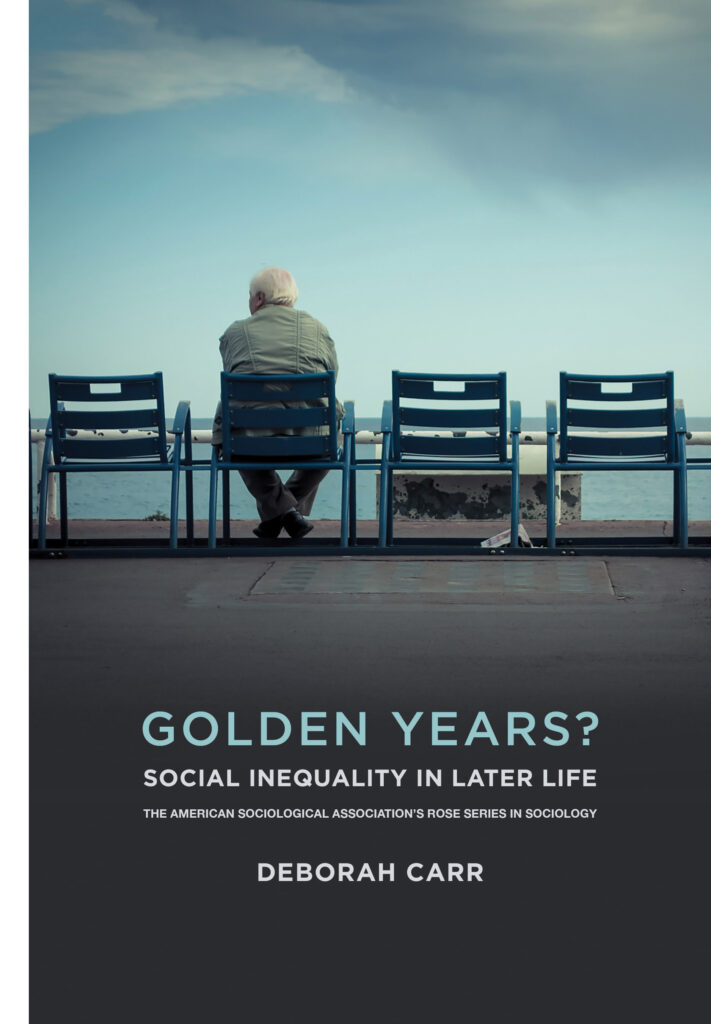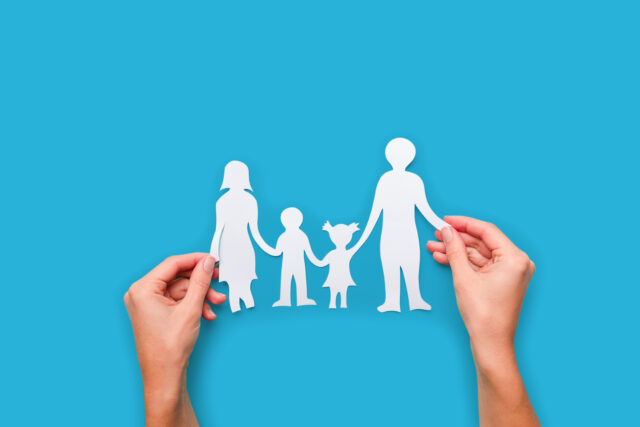
Social, Economic Inequities Grow with Age
Retirement, as portrayed in TV commercials, is for indulging a passion, whether tennis, enjoying more time with a spouse, frequent socializing, or civic engagement. Boston University sociologist Deborah Carr isn’t buying this idealized picture of aging.

“This gilded existence is not within the grasp of all older adults,” she argues in “Golden Years? Social Inequality in Later Life.” “For those on the lower rungs of the ladder,” she writes, retirement is “marked by daily struggle, physical health challenges and economic scarcity.”
Her book, which mines multidisciplinary research on aging, reaches the distressing conclusion that economic inequality not only exists but that it becomes more pronounced as people age and become vulnerable. And this problem will grow and affect more people as the population gets older.
Poverty has actually declined among retirees since the 1960s. But by every measure – health, money, social and family relationships, mental well-being – seniors who have a lower socioeconomic status are at a big disadvantage. They have more financial problems, which creates stress, and they are more isolated and die younger.
Throughout the book, Carr documents the myriad ways the disparities, which begin at birth, reinforce each other as people grow up and grow old.
“Advantage begets further advantage, and disadvantage begets further disadvantage,” Carr concludes. For the less fortunate, “old age can be the worst of times,” she said.
A college degree puts young adults on a path to higher earnings, which will one day translate to living more comfortably in retirement. Thanks to generous employer health insurance and advances in medical care, college-educated Americans’ rates of disability and disease in old age have declined sharply. This group has also enjoyed significant improvements in their ability to perform so-called Activities of Daily Living, such as cooking, cleaning, and taking medications.
Retirees who dropped out of high school, on the other hand, are at risk of premature death for multiple reasons that compound over a lifetime. Their health might’ve suffered during their working years, if they were forced to cut corners on medical care because a low-paying job either didn’t have health insurance or had minimal coverage. Low-income people are also more likely to engage in unhealthy behaviors like smoking and drinking or to live in unsafe, dilapidated housing or more polluted neighborhoods. The author cites research showing that social factors like these explain 60 percent of premature deaths in the United States.
Marriage, like a college degree, is another path to economic security, because couples can pool their resources. Both the financial and emotional support in marriage become more important when couples are no longer engaged with work. Race comes into play here: 44 percent of white women over age 65 are married, compared with 23 percent of black women their age. Minorities also have lower odds of remarrying after a divorce or widowhood.
Loss is the one thing the elderly share equally. Social isolation often follows the end of meaningful employment, or a spouse, friends, and loved ones die. But the impact of loss is deeper when people lack the resources required to get involved in other fulfilling activities or if family members with their own financial constraints are unable to fill the void in the older loved one’s life.
Financially secure retirees even die better. Most elderly people have a strong preference for dying in their own homes. Being able to do this depends in part on one’s socioeconomic status. Carr points to a study of terminally ill cancer patients, which found that when a relative of the patients took at least two weeks off before death to care for their loved ones, the patients were more likely to die at home. But taking time off is an unaffordable luxury in low-income families if it means the caregiver would have to forgo a paycheck.
Carr’s job here is to point out the inequities of old age. In reality, seniors’ coping skills are well honed, and retirement isn’t always this bleak. And as she points out, money doesn’t buy happiness. But it sure helps.
Squared Away writer Kim Blanton invites you to follow us on Twitter @SquaredAwayBC. To stay current on our blog, please join our free email list. You’ll receive just one email each week – with links to the two new posts for that week – when you sign up here. This blog is supported by the Center for Retirement Research at Boston College.
Comments are closed.







Discouraging and scary article.
Another area, where those with less income may suffer more, may be risk of scams:
Those with higher incomes may have had more experience with investments and home repairs and thus be better equipped to resist the common scams in those areas.
Those with higher incomes may have the more healthy support systems described in the article, and those systems may provide protection.
With higher wealth and income one may better recover from scams, both financially and emotionally. Solutions might be found under the broad heading of community: We need to learn, live, play, talk, travel, work, worship, etc. more together.
Charles Murray’s book Coming Apart raises similar questions.
Infirmaties as we age are tragic and become even more tragic when no support is available.
In our case, my wife (now 73 years old) has had a kidney transplant, two strokes, two broken shoulders and a hip replacement (caused by the use of prednisone needed for the kidney transplant) in the last 3 years.
Jan would certainly not have survived without family support and the financial support provided by Medicare and very good supplemental insurance. We also have long-term care insurance which we now use to pay the ongoing cost (currently $60,000 per year) for in-home care.
Thankfully my wife is somewhat functional with the residuals being left side weakness and continued inability to perform the activities of daily living. She needs help bathing, dressing, cannot cook as she leaves the burners on, nor can she manage her meds due to short-term memory loss and, per the physicians, may never be able to fully recover…
Because of the support we receive, she and I are able to lead a nearly normal life.
As a somewhat humorous side note, the last time we called the paramedics (she had fallen), they came in and first thing they said was “Hi Jim, where is she?”
(We are now on a first name basis)
Again another support function that has proven invaluable for both of us as I am unable to get her off the floor if she falls. Again, more good news she has gotten stronger and more stable as she continues her exercises every morning but now in our home rather than in a facility (and has not fallen in months). I am optimistic and feel there is opportunity for continued improvement as she is now on a new medication that I refer to as a miracle drug. On a recent visit to her cardiologist, her LDL (the bad cholesterol) was down to 26 (goal is 70 after a stroke). The cardiologist said “live your life,” your wife will never have a heart attack or another stroke as long as she is on this medication. Relative to your article, this medication is not available to most people as the monthly costs is $1,200. But with Medicare and good supplemental insurance our average cost is about $2,000 per year.
So all that being said we are one of the lucky couples. We have good insurance family nearby (our son lives 1 mile away) and friends that have not deserted us. We are actually planning a visit to our son in Chicago as we can get wheelchair assistance thru the airports (again, another support function that helps us live a near normal life).
All things considered, I consider us fortunate.
Does the book consider gender?
Although there are many women with formal and experiential education and with financial success, some women were less prepared for retirement, particularly in earlier generations. And with longer life expectancices, women may spend more time in retirement, thus having more time for problems to appear.
Great article. Wish more people would help older people!